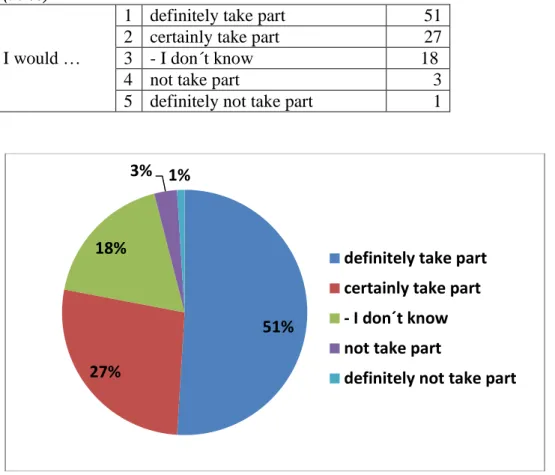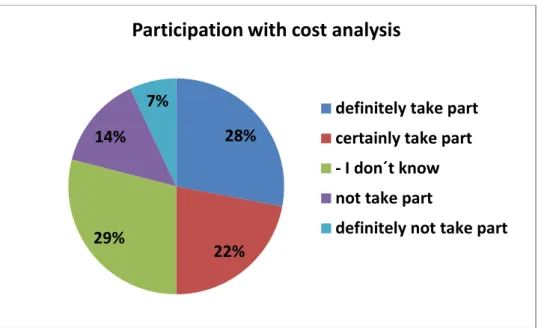Acceptance of rehabilitation with alcohol interlock support
for DUI offenders in Germany
Dr. Joachim Seidl
Association for Education, Advanced Training and Further Education (AFN), Dresden Petra Feustel-Seidl
Chemnitz University of Technology, Faculty of Economics and Business Administration
Background
In Germany an IID project is being prepared by different companies, amongst others DEKRA and AFN.
The projected interlock program does not only include the installation of a device, but a number of other engineering, medical, toxicological and psychological activities that prevent drunk driving. Using a long-term experimental study, the use of IIDs is explored. Rehabilitation has a long tradition in Germany. Additional psychological rehabilitation programs result in lasting behavioral changes. The following experimental groups will be included in this IID project:
Individual psychological intervention (according to Alfred Adler) (AFN) Behavioral psychological intervention (DEKRA)
Inpatient detoxification (addiction treatment)
No rehabilitation program / psychological intervention, all of those combined with an IID.
Some implementation issues are as yet unsolved: No legal foundation for an offender program
Would the project be part of the criminal or the administrative law?
A driver without the required fitness to drive is not allowed to drive until the driver´s fitness is retrieved
No "limited fitness / qualification" by using an Alcohol-Interlock.
Aims
In preparation for the long-term experimental study, a small investigation about the acceptance of alcohol interlocks in Germany was performed. This paper focuses only on the cost-benefit aspects from the view of the offenders.
Methods
These aspects of the current study in preparation of the major one have been captured with the help of a questionnaire from a sample of 607 subjects, who participated in a
rehabilitation course after (at least) one DUI offence. The subjects were asked about various topics.
Results
On the question of acceptance of participation in a course and accepting installation of an alcohol interlock device the almost 80 % of the subjects would want to participate in the
Table 1: Potential participation in the alcohol interlock project without cost analysis (in %)
I would …
1 definitely take part 51
2 certainly take part 27
3 - I don´t know 18
4 not take part 3
5 definitely not take part 1
Fig. 1: Potential participation in the alcohol interlock project without cost analysis (in %)
After having been informed about the costs (monthly expenses of about 100 EUR):
Table 2: Potential participation in the alcohol interlock project with cost analysis (in %)
low-income earners
I would …
1 definitely take part 28 30
2 certainly take part 22 17
3 - I don´t know 29 30
4 not take part 14 15
5 definitely not take part 7 8
In the last column "low-income earners”, defined as the quarter of the participants with the lowest income. Even in this group, a high level of acceptance is expected. Marques (2001, p. 18) had also found that the costs usually are no general obstacle.
51% 27%
18%
3% 1%
definitely take part certainly take part - I don´t know not take part
Fig. 2: Potential participation in the alcohol interlock project with cost analysis (in %)
Even after inclusion of their own costs for the installation of alcohol interlock device, half of the clients are ready to attend. Another quarter is undecided. If this group could be motivated to participate, the number of potential participants would rise to about 75 % of the respondents.
In Table 3 the results are shown, how many respondents would expect a benefit from an earlier relicensing, and to what extent. 23 % of the group would expect a much higher income if they could work in their former jobs, which would not be possible without a license.
Table 3: monetary benefit through earlier new license
Percentage average monthly benefit
higher income 23 % 797 EUR
decreasing travel costs 41 % 185 EUR
additional income 30 % 327 EUR
Many clients also report time savings when they would get their license reinstalled.
Table 4: temporal benefits through earlier license renewal
Percentage average daily time saving
time savings 76 % 1,9 h
Further non-monetary benefits often reported by participants of the investigation: family, shopping, doctor, parents, grandparents
mobility, flexibility (private and professional life) independence. 28% 22% 29% 14% 7%
Participation with cost analysis
definitely take part certainly take part - I don´t know not take part
After knowing the costs, half of the interviewees said they would participate; still more one quarter was undecided. 21 % declined. Even from the group of low-income earners, half declared to be willing to participate in the project.
23 % indicated to be able to achieve a higher income.
76 % of the subjects indicated time savings due to the participation in the alcohol interlock project, i.e. nearly two hours daily on average.
It can be expected that, with the establishment of the regulatory administrative framework that a substantial part of the alcohol-influenced drivers would decide to participate in an alcohol interlock program.
However, a qualified incentive and briefing should be conducted.
References
Marques, P. R. et al. (2001). Alcohol Ignition Interlock Devices: I: Position Paper. Retrieved from www.icadts.org/reports/AlcoholInterlockReport.pdf
Nickel, W.-R., & Schubert, W. (Eds.). (2012). Best Practice Alkohol-Interlock:
Erforschung alkoholsensitiver Wegfahrsperren für alkoholauffällige Kraftfahrer. Bonn: Kirschbaum.

